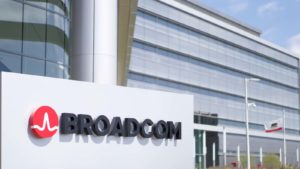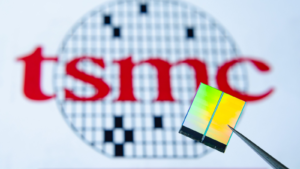
Three titans may hit a historic ascent in the pulsating economy, where fortunes rise and fall on market lead and strategy. These companies lead in finance, tech, and semiconductors. In an economy of massive uncertainty, these trillion-dollar stocks are behemoths marching constantly toward a huge market cap.
Read more to dissect the strategies and market dynamics propelling these trillion-dollar stocks forward.
Berkshire Hathaway (BRK-B, BRK-A)

Berkshire Hathaway (NYSE:BRK-A, NYSE:BRK-B) holds rock-solid financial standing and edgy investment strategies under the leadership of Warren Buffett. For instance, Berkshire Hathaway’s consolidated shareholders’ equity stood at $525.3 billion as of Q3 2023. Here, despite a decrease of $14.6 billion in Q3, there was a considerable increase of $51.9 billion during Q1-Q3 2023. This shareholder equity growth suggests the company’s capability to generate high profits and accumulate wealth.
Additionally, the continuous shareholder equity growth reflects Berkshire Hathaway’s capital allocation and investment maneuvers. This highlights the company’s fundamental capability to utilize its resources to derive valuation-based expansion. Moreover, a solid capital base gives Berkshire Hathaway a foundation to support its strategic initiatives, including acquisitions and investments in diverse sectors.
Furthermore, Berkshire Hathaway’s stock repurchase program targets the repurchasing of Class A and Class B shares at prices below their intrinsic value. The program has no specified maximum number of shares for repurchase or required amount. During Q1-Q3 2023, Berkshire Hathaway repurchased shares worth $7 billion. Thus, this program provides downside protection to the stock’s valuation.
Fundamentally, the flexible share repurchase program reflects Berkshire Hathaway’s focus on boosting value. The company strategically utilizes excess cash by repurchasing shares when they are undervalued relative to their intrinsic worth.
Finally, Berkshire Hathaway (insurance and other businesses) held cash and U.S. Treasury bills totaling $152 billion as of Q3. Berkshire Hathaway’s massive liquidity allows it to capitalize on potent investments as they arise. Therefore, the conservative approach ensures stability as observed in considerable cash equivalents and Treasury bills holdings.
Broadcom (AVGO)

Broadcom’s (NASDAQ:AVGO) semiconductor solutions revenue has been on a stable growth trajectory. In fiscal 2023, semiconductor revenue hit $28.2 billion, a 9% YOY growth. The trend here suggests a fundamental strength in the company’s semiconductor operations. This moat has been a driver of overall valuation growth.
Additionally, the company focuses on generative AI and has delivered strong results. In 2023, generative AI revenue will hit $1.5 billion, capturing 15% of semiconductor revenue. This diversification into emerging techs, such as AI accelerators, highlights Broadcom’s fundamental capability to adapt to market trends and capitalize on demand from high-growth areas.
Furthermore, Broadcom has capitalized on the growing demand from hyperscalers for custom AI accelerators and networking solutions. In Q4, networking revenue was boosted by 23% year-on-year, based on solid demand from hyperscalers. This suggests Broadcom’s capability to capture emerging demand for large-scale data centers. Hence, this contributes considerably to semiconductor revenue growth.
Despite a minor decline in wireless revenue year-on-year, Broadcom’s engagement with North American customers is deep and strategic. The wireless segment, representing 27% of semiconductor revenue in Q4, may remain stable in fiscal 2024. This stability demonstrates Broadcom’s prolonged relationships with mega customers and capability to channel through market shifts.
Finally, Broadcom has demonstrated notable cost management within its semiconductor segment, making it an ideal option in trillion-dollar stocks. Despite revenue growth, operating expenses for the semiconductor segment remained stable year-on-year at $822 million in Q4, implying that the company can optimize costs and simultaneously scale up operations.
TSMC (TSM)

The continued solid ramp of TSMC’s (NYSE:TSM) 3-nanometer tech is a considerable driver of its topline growth. In Q4 2023, 3-nanometer process technology contributed 15% of wafer revenue, and in 2023, it accounted for 6% of wafer revenue. Moreover, TSMC expects revenue from its 3-nanometer technology to be over 3X in 2024, reaching a mid-teen percentage of total wafer revenue. This suggests TSMC’s capability to innovate and quickly commercialize advanced technologies.
TSMC’s topline is diversified across multiple platforms, including high-performance computing (HPC), smartphones, IoT, automotive, and DCE (digital consumer electronics). In Q4, HPC and smartphone platforms accounted for 43% of revenue. Despite fluctuations in individual segments, TSMC maintains a balanced revenue distribution. This neutralizes the risks associated with dependency on a single market segment. For instance, even though IoT revenue decreased by 29% sequentially, growth in other segments offset the impact on overall revenue.
Moreover, TSMC’s strategy to expand its manufacturing footprint is an enabler of its growth. There are projects in process, such as the specialty technology fab in Kumamoto, Japan; the fab in Arizona, USA; and the planned fab in Germany. This signifies TSMC’s focus on capitalizing on emerging advanced semiconductor demand and leveraging strategic partnerships. Hence, these expansions boost TSMC’s capacity but also mitigate geopolitical risks (Chinese-Taiwan) and solidify bonds with governments.
Looking forward, TSMC focuses on advancing its technology roadmap from 3-nanometer to more deep nodes like 2-nanometer (N2). This ensures its moat and competitive edge in the semiconductor industry. With N2 technology entering volume production in 2025, TSMC continues to invest in edgy capabilities to capture evolving market demands, particularly AI-related. Finally, TSMC’s shifts toward specialty technology solutions while expanding its advanced node production capacity support its future momentum as a top choice in trillion-dollar stocks.
As of this writing, Yiannis Zourmpanos held a long position in TSM. The opinions expressed in this article are those of the writer, subject to the InvestorPlace.com Publishing Guidelines.





